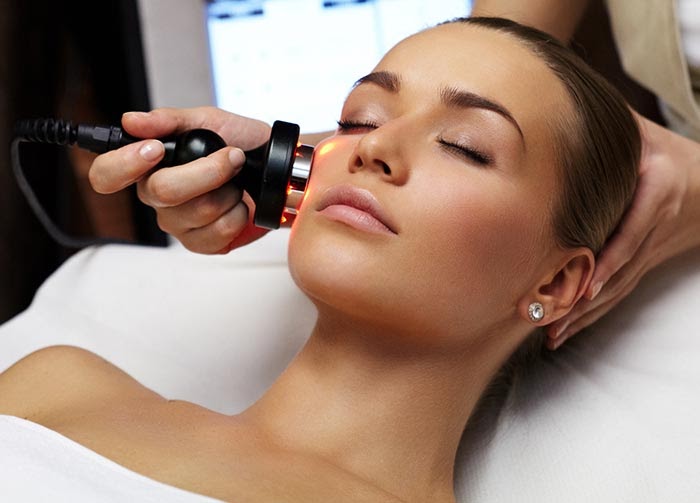Many melasma patients are mainly women because they are more exposed to hormonal changes than men. Exposure to UV rays might cause even bigger skin damage and dark spots, but is it the same with red light?
Red light therapy might be beneficial in improving skin conditions like rosacea, treating melasma, etc. But does red light therapy increase melasma?
You should feel safe using the prescribed pharmacological products plus red light therapy to speed up the healing process of the issue or overall skin care. However, the effects of RLT are still not solidly proven.
So, if you are interested to discover whether red light therapy increases melasma, continue reading, as you will also learn other helpful things.
Let’s get started!

Does Red Light Therapy Increase Melasma or Harm the Skin?
If used properly, the red light therapy device may not harm your skin, increase melasma, or burn the face. Red light rays do not produce heat and are not dangerous for the skin or overall health.
The red light device might be dangerous only if you place an intense RLT device too close to the skin. Also, exposure to an RLT for longer than recommended might have consequences. Being too close to an RLT device is dangerous because a broken wire or surface damage might burn your skin.
Melasma, a type of skin hyperpigmentation, is caused by hormonal changes and is mainly present among females. This condition is treated with acid-based skincare products, lasers, Sylfirm X, micro-needling, and red light therapies.
Red light might be beneficial in treating many conditions since it might affect increasing collagen production. In other words, red light is safe and might help you treat melasma, not make it worse.
So, if you are concerned about the adverse effects of red light therapy for melasma, it is best to leave the treatment in the professional’s hands to treat your face with RLT. Red light may not be dangerous and would not damage or worsen your skin condition.
How Long Should You Use Red Light Therapy for Melasma?
It is good to use red light therapy two to four days a week whether you have melasma or other skin conditions or want to regenerate the skin cells and tissue. You should care about your body, especially the skin, as it is the largest organ in the human body.
Red light can not do everything on its own. It is important to use the proper therapy, creams, and lotions when it comes to melasma or other similar skin conditions. You have to visit a dermatologist to follow the condition, use sunscreen, and then use red light therapy.
Red light therapy might help the skin regenerate from the inside, making the nutrients and oxygen travel to the rayed areas and feed the skin. Also, RLT might initiate collagen production, which may be highly beneficial for skin, hair, and cartilage health maintenance.
If you decide to add red light therapy to the melasma treatment, do the treatment two to four times a week, 10 to 15 minutes per session. Do not overuse the RLT device and stand too close or too much in front of it. Overusing might lead to unwanted side effects.
How to Treat Melasma
No one can guarantee that using a specific treatment will help you permanently clean up melasma pigmentation. Everyone has different skin and melasma affection, meaning everyone needs different treatment depending on the skin type and melasma cause.
However, practicing a skincare routine using everyday products and prescribed melasma treatment products might improve your skin and make the hyperpigmentation less visible.
Meanwhile, choose a full-coverage concealer or foundation that might cover the pigmentation, put SPF every day (even under makeup), avoid long sun exposure, and take your melasma medications and creams regularly.
Overall, some skin conditions, like melasma, may be treated with specific skincare products prescribed by a dermatologist. The red light therapy, in this case, is not dangerous and might support the skin healing and revitalizing process. Having a 15-minute RLT three times a week might help eliminate facial stains and impurities.
Is Red Light Therapy Beneficial for Other Skin Conditions?
Red light therapy may have various benefits for facial skin repair and hair regeneration, muscle pain ease, sleep improvement, and overall health maintenance.
In most cases, people practice doing red light therapy to possibly treat scars, wounds, acne, aging signs, wrinkles, pores, etc. Some women have used RLT on the stomach and legs to potentially reduce and treat stretch marks caused by pregnancy.
For skin conditions precisely, some dermatologists use red light to presumably improve skin affected with psoriasis, eczema, and rosacea.
The results of treating skin and hair with red light therapy may seem quite promising, but there is no solid evidence claiming any of them. Studies done on humans have shown positive results in collagen production and tissue regeneration.
Anyway, you should practice doing a skincare routine because nothing can independently improve your condition, especially when it comes to hyperpigmentation or skin disease.

Is Red Light Dangerous for the Skin?
Red light is not dangerous if properly used. If you use an RLT device at home, be highly careful and follow the seller’s recommendation and guide. If you have a specific skin disease or condition, it is best for a professional to treat your face.
It is important to be highly careful when it comes to hyperpigmentation or melasma since these conditions are often treated the same. So, does red light therapy increase melasma? No. There is no evidence showing that red light exposure might worsen skin conditions with melasma.
Conclusion
Red light therapy might help to regenerate and rejuvenate your skin. In most cases, doctors and dermatologists recommend red light therapy for healing and speeding up the recovery process, which points to the fact that red light may be safe and beneficial for overall health.
If you have hyperpigmentation or melasma, consult a dermatologist before going to red light therapy. The effects of red light are not solidly proven, but RLT would not increase melasma or worsen your skin condition.

Hello! I’m Nicky Rodgers.
Almost a decade ago, I got excited about the idea of employing alternative methods like red light therapy to create a healthier life.
To learn more about it, I did my Certified Light Therapist course from Photonic Therapy Institute and started looking into the intricacies of how light therapy influences several bodily processes. Before I knew it, my interest had become an obsession which resulted in this extensive blog.
Here, I offer countless well-researched articles to help you understand the benefits and uses of light therapy. I hope this information gives you a head start in your wellness journey.
